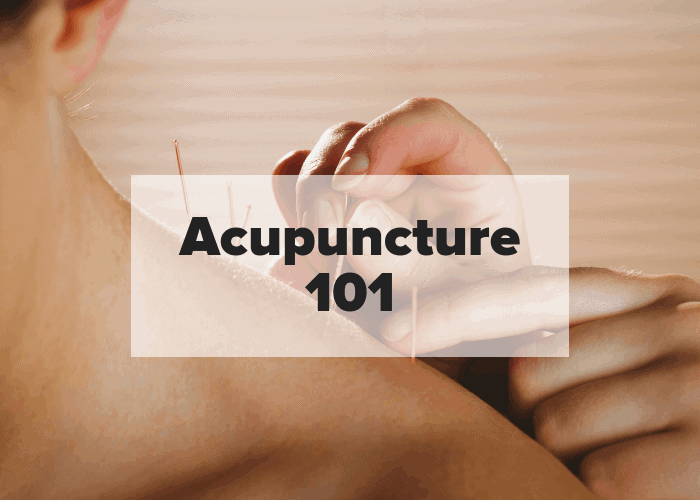Hi, I’m Dr. Emily Parke with your health minute for today. Today, I’d like to talk to you about acupuncture. Now, acupuncture has been around for anywhere between 3,000 to 5,000 years, depending on the sources that you find.
It is, of course, traditional Chinese medicine. It’s very much part of that. But lots of other cultures have acupuncture as well, Japanese, Korean, and other cultures have of course used acupuncture points or acupressure points in various forms.
So, acupuncture uses a set of meridians, and the meridians are considered these energy channels that run throughout the body. And from the traditional sense, when acupuncture points, when points on the meridians become blocked, then the energy flowing through the meridians is blocked and therefore symptoms and signs start. And so, in acupuncture, by placing a needle directly into that point, we actually stimulate it. Now, in modern medicine, we understand why.
So, the needle goes through the skin and most of the time into a layer called the fascia. Now, the fascia is this continuous layer that runs throughout the body, it’s a layer that runs over all of your muscles. It’s the only continuous layer in your body, which makes it kinda cool and also helps us understand a little bit more about how acupuncture works today.
So, by inserting a needle, the theory is that you actually change the electrical charge of things running through the fascia, and therefore, impact health. Now, from a modern standpoint, they have done many functional MRI studies, meaning they send people through an MRI scanner, look at the brain and which areas light up, and then take them out, and then create a pain sensation. This one study created a pain sensation in health subjects, sent them back through the MRI scanner, saw which areas lit up, and then took them out of the scanned, placed acupuncture needles in to treat the pain, and then back through the scanner. And you could actually see the differences in the areas of the brain that lit up. So, it’s fascinating. So, now we know with modern medicine that acupuncture actually does work.
So, I just want to kind of show you a little bit about what the acupuncture needles and techniques look like because a lot of people get scared. And if they’re afraid of needles, then of course acupuncture might not be appealing to them. But the needles are actually very, very small. So, this is the smallest. This is one of the smallest needles. And they range in size. They can get even bigger than this if needed. Now, why would you need a bigger acupuncture needle?
Well, if you’re treating musculoskeletal pain and you’re having to get through big areas of muscle, so think your gluteus for example, your butt muscles are huge, and so, we may need a lot of needle to get there. But if we’re doing acupuncture points in the ear, in the head, or in peripheral points in the body, then we obviously can use or will be using a smaller needle type.
So, the other part to an acupuncture treatment is, we may actually be hooking you up to a little bit of electrical stimulation. So, this is called a PENS unit. P, percutaneous, Electrical Nerve Stimulation. So, those of you that have had physical therapy before, you might have had a TENS unit applied to help. So, TENS is Transcutaneous, T. So, this actually supplies an electrical stimulus directly through the needles that are, of course, through your skin and ideally through your fascia. So, it actually helps the acupuncture treatment be even more affective.
Also, part of your acupuncture treatment, at the end we may use a technique called Gua Sha. The term for that in English is scraping, which of course doesn’t sound appealing right from the start, but actually, it’s very, very helpful. It’s also a fascial treatment, and we use a Gua Sha tool of some kind, this is my favorite one. It’s actually a wanton soup spoon, and they do make Gua Sha tools but I have used them and I much, much prefer this method.
And so, there is a specific technique that we use in the fascial plains to help release anything that’s in there. And so, acupuncture can also use cupping, which can apply either static cups, meaning glass kind of cups directly applied to one specific site, or there’s moving cups as well, meaning we create a suction and move the cups throughout.
And then, of course, applying heat is also a very common part of acupuncture as well. And here at our clinic, we actually have IR heat lamps, infrared heat lamps, that we use to apply heat and sometimes little tiny, what are called Moxa Cones. Moxa is part of that traditional Chinese medicine as well.
So, I hope this helps explain a little bit about the technique of acupuncture. And just know that acupuncture can be used literally for any sign or symptom. Of course, it’s been really, really, very helpful for patients with pain management, headaches, GI symptoms, hormone balance, anxiety, stress, sleep disorders, and allergies. The list is pretty endless. And it’s a great adjunct to your functional medicine plan.
I’m Dr. Emily Parke with your health minute for today.










What’s most exciting about acupuncture is how needles are inserted very gently through the skin’s fascia to improve the body’s electrical charges. Mom would definitely love the idea of feeling better only by getting these tiny, fine needles on her acupuncture spots. She’d love to get her energies up, her BP down, and her headaches relieved quickly, so this is a really attractive option. It’s very neat, very easy, and very comfortable.